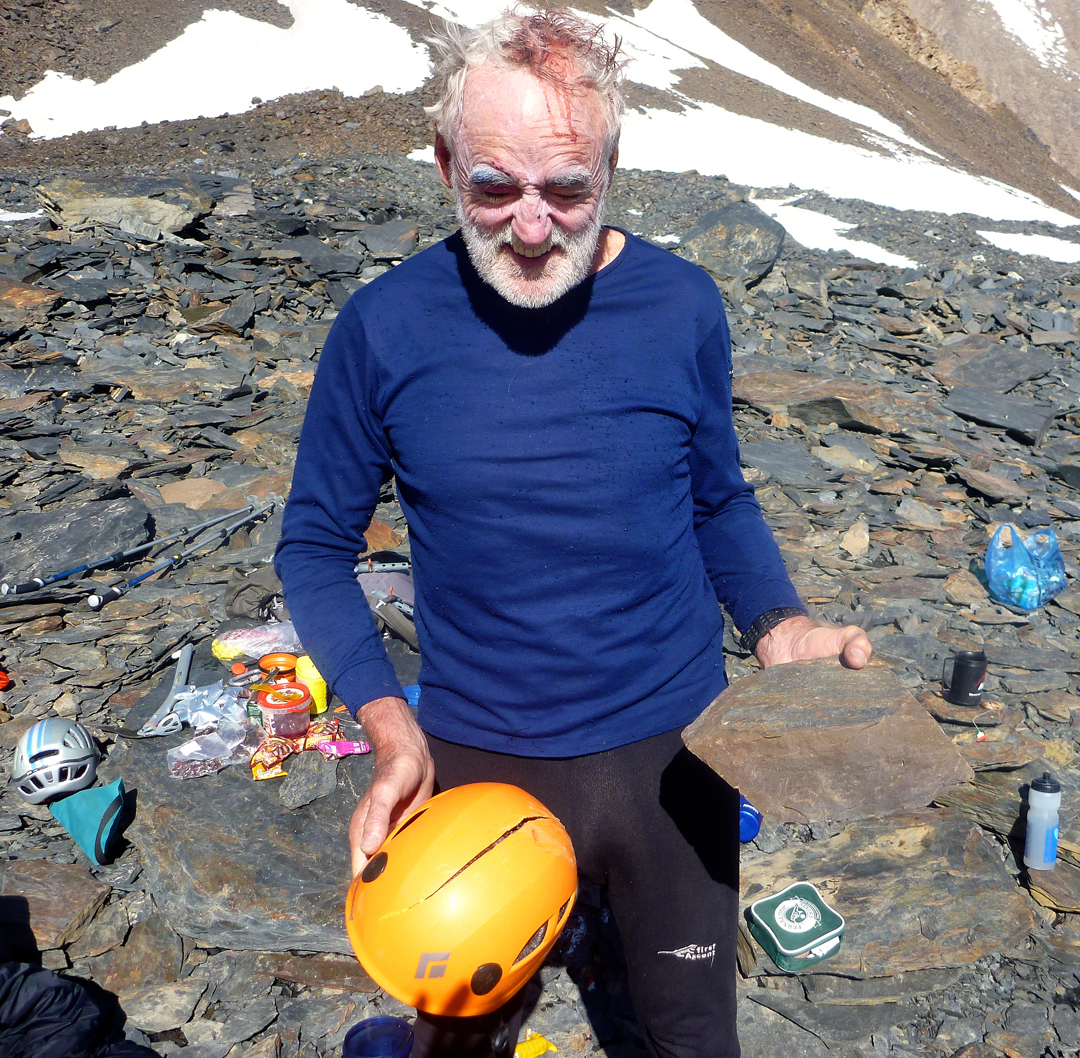Qara Jilga (6,094m), north ridge attempt
Afghanistan, Pamir

Following my 2010 trip to Koh-e-Iskander, northeast of the Qara Jilga massif (AAJ 2011), I wanted to return and attempt one of the Qara Jilga summits. I persuaded Richmond MacIntyre (South Africa) and Rich Parker (U.K.) to join me. After two days’ drive from Dushanbe we crossed the Tajik-Afghan border at Ishkashim.
Our agent, Adab Shah, arranged for us to be met by friendly staff, who helped us arrange permits and an old Land Cruiser that bumped, splashed, slid, and scraped its way up the Wakhan. We had a touching meeting with a senior policeman, who told us how grateful he and his countrymen were for the aid the U.K. has sent, and the sacrifices of service personnel—a heartfelt thanks from a man concerned about what will happen to his country when the U.N. pulls out. We reached the end of the road at Sarhad-e-Boroghil. Seven days later, with the help of horses and mules, we walked via the Kyrgyz encampment of Kasch Goz to a base camp (4,815m) on glacial moraine below the north side of Qara Jilga.
Preparing for an attempt, we first checked a possible descent route and scouted a route up a couloir running onto the main north ridge. The couloir wasn't long, but the snow was unhelpful and the rock shattered. Every anchor was hard-fought, but finally we reached the crest of the ridge at 5,400m. We now began to descend prior to a summit attempt next day. Seven rappels later, while Rich and Richmond were secured to a snow bollard, rockfall hit. A square rock bigger than Richmond's head landed on his helmet with a crack that shattered the peace of the face. I froze, hunched over, peering up to see if there was more rock on the way. Rich said, "Al, get over here now, we've got a problem!"
Richmond was slumped on the anchor, eyes rolled back in his head. A little blood leaked from under his helmet; the latter appeared to have been struck neatly with an axe. Saliva streamed from his mouth, and he was unresponsive.
My mind did back flips. Ten days to get here, no hope of outside assistance, a long way down: If he's dead, what am I going to tell his wife?
During five lowers and rappels, Richmond slowly rejoined us. He started asking questions: "What country am I in?" "Who are you?" There was more excitement when, in the dark and 50m below me, they both went free-fall over the bergschrund. But finally a wobbly South African staggered between us to the tent.
Our initial relief was enormous, but we weren't out of trouble yet. Although the wound didn't look particularly serious, we had no idea what was going on inside. Worried about spinal injuries or internal bleeding, our priority was to evacuate him as soon as possible.
The Wakhan is an isolated spot. We were days of walking from the end of a poor excuse for a road. The proximity of so many borders (China, Pakistan, Tajikistan, and Afghanistan) would make any helicopter rescue a complex diplomatic task. Rich made sat-phone calls to our partners at home. The embassy was as helpful as was possible, but, as expected, the evac was going to be down to us.
Richmond is a tough character. After a day he was walking, and after another we had him riding a horse with a supportive collar, despite neck pain and altered vision in one eye. We reversed the 10-day approach in seven, despite a washed-out road, terrible vehicles, and a river that we crossed using porters and a wrecked lorry as a bridge. We succeeded largely due to the help of our excellent Wakhi staff. Long term, there was no permanent damage.
No summit this time, just another mad adventure and more help from the wonderful inhabitants of this small corner of a troubled country. Since my visit in 2010, fighting has moved closer to Ishkashim, and it remains to be seen if it will, for the first time, encroach on the peaceful people of the Wakhan Corridor. I do hope not.




